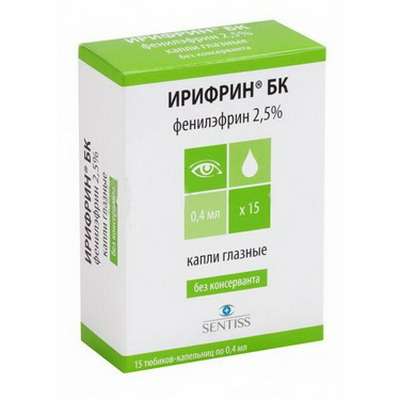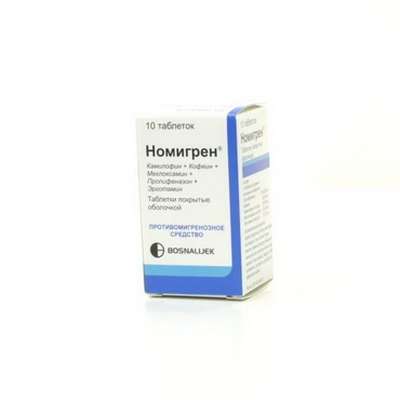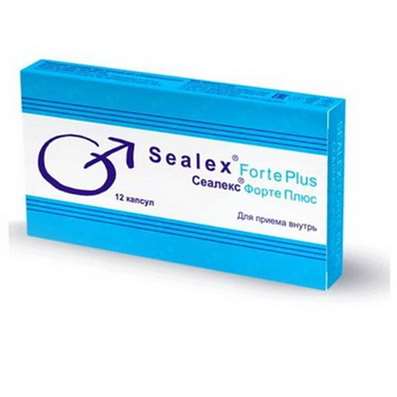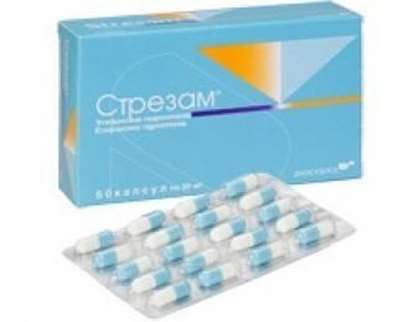Instruction for use: Nurofen MultiSymptom
I want this, give me price
Active substance Ibuprofen + Paracetamol
ATX code M01AE51 Ibuprofen in combination with other drugs
Pharmacological group
Analgesic combined (NSAIDs + analgesic non-narcotic) [NSAIDs - Propionic acid derivatives in combinations]
Analgesic combined (NSAIDs + analgesic non-narcotic) [Anilides in combinations]
Nosological classification (ICD-10)
G43 Migraine
The pain of migraine, Migraine, hemiplegic migraine, Migraine headache, A migraine attack, Continuous headache, hemicranias
J06 Acute upper respiratory infections of multiple and unspecified
Frequent colds viral diseases, Infections of the upper respiratory tract, Acute respiratory disease influenza character, for colds Pain, Acute colds,Cold, respiratory infection,Seasonal colds, Pain in infectious and inflammatory diseases of the upper respiratory tract, Bacterial infections of the upper respiratory tract, Bacterial respiratory infections, Viral disease of the respiratory tract, Viral respiratory tract infections, Inflammatory disease of the upper respiratory tract, Inflammation of the upper respiratory tract disease, Inflammation of the upper respiratory tract illness with difficult sputum, Inflammatory airway disease, Secondary infections with colds, Shortness of sputum in acute and chronic respiratory diseases, Upper respiratory tract infection, Infections of the upper respiratory tract, Respiratory Tract Infections, Infections of the respiratory tract and lungs, Infectious-inflammatory diseases of the upper respiratory tract, Infectious-inflammatory diseases of the upper respiratory tract and ENT-organs, Infectious-inflammatory diseases of the upper respiratory tract in children and adults, Infectious-inflammatory diseases of the upper respiratory tract, Infectious inflammation of the airways,respiratory infection, Qatar upper respiratory tract, Catarrh of the upper respiratory tract, Catarrhal disease of the upper respiratory tract, Catarrhal symptoms of the upper respiratory tract, Coughing with a cold, SARS, ARI, ARI with rhinitis phenomena, Acute respiratory infection, Acute infectious and inflammatory disease of the upper respiratory tract, Acute respiratory disease, Sore throat or nose, Respiratory viral infections, Respiratory diseases, Respiratory infections, Recurrent respiratory infections, Secondary infection with influenza, cold in the chest, Feverish condition with flu usitis, acute sinusitis, genyantritis, purulent sinusitis
J11 Influenza, virus not identified
Flu, Influenza in the early stages of the disease, Flu in children, cold in the chest, Begins flu-like condition, Acute disease parainfluenza, parainfluenza, parainfluenza state, influenza epidemics, The pains of the flu, Influenza
K08.8.0 * Painful toothache
Dentinal pain, Dentinal pains, Pain pulpitis, Anesthesia in dentistry, Pain syndromes in dental practice, Pain after removal of tartar, Pain when extracting a tooth, Toothache, Pain after dental interventions
M25.5 Pain in the joint
Arthralgia, Pain syndrome in musculo-articular diseases, Pain syndrome in osteoarthritis, Pain syndrome in osteoarthritis, Pain syndrome in acute inflammatory diseases of the musculoskeletal system, Pain syndrome in chronic inflammatory diseases of the musculoskeletal system, Pain in the joints, Soreness of the joints, Soreness of joints in severe physical exertion, Painful inflammatory joint damage, Painful conditions of the musculoskeletal system, Painful joint conditions, Painful traumatic affection of joints, Pain in the musculoskeletal system, Pain in Shoulder Joints, Pain in the joints, Joint pain, Joint pain with injuries, Musculoskeletal pain, Pain with osteoarthritis, Pain in the pathology of the joints, Pain in rheumatoid arthritis, Pain in chronic degenerative bone diseases, Pain in chronic degenerative joint diseases, Bone-joint pain, Joint pain, Arthritic pain of rheumatic origin, Articular pain syndrome, Joint pain, Rheumatic pain, Rheumatic pains
M54 Dorsalgia
Pain in the back area, Pain in the spine, Back pain, Pain in different parts of the spine, Backache, Painful pain syndrome in the spine, Pain in the musculoskeletal system
M54.5 Pain below the back
Pain in the lower back, Lumbar pain, Lumbalia, Painful conditions of the spinal column, Back pain, Lower Back Pain Syndrome
M79.1 Myalgia
Myofascial pain syndromes ,Pain syndrome in musculo-articular diseases, Pain syndrome in chronic inflammatory diseases of the musculoskeletal system, Pain in the muscles, Tenderness of muscles, Muscular soreness in severe physical exertion, Painful conditions of the musculoskeletal system, Pain in the musculoskeletal system, Pain in the muscles, Pain at rest, Muscle aches, Muscle pain, Musculoskeletal pain, Myalgia, Muscle pain, Muscle pain at rest, Muscle pain, Muscular pain of non-rheumatic origin, Muscle pain of rheumatic origin, Acute muscle pain, Rheumatic pain, Rheumatic pains, Myofascial syndrome, Fibromyalgia
M79.2 Neurology and neuritis, unspecified
Pain syndrome with neuralgia, Brachialgia, Occipital and intercostal neuralgia, Neuralgia, Neuralgic pain, Neuralgia, Neuralgia of intercostal nerves,Neuralgia of the posterior tibial nerve, Neuritis, Neuritis traumatic, Neuritis, Neurological Pain Syndromes, Neurological contractures with spasms, Acute neuritis, Peripheral neuritis,Post-traumatic neuralgia,Severe pain of a neurogenic nature, Chronic neuritis, Essential neuralgia
N94.0 Pain in the middle of the menstrual cycle
Algomenorea, Painful menstruation, Menalgia, Pain in menstruation
N94.6 Dysmenorrhea Unspecified
Pain during menstruation, Functional disorders of the menstrual cycle, Menstrual cramps, Emmeniopathy, Pain during menstruation, Painful menstrual irregularities, algomenorrhea, algomenoreya, Pain smooth muscle spasm, Pain spasm of smooth muscles (renal and biliary colic, intestinal spasms, dysmenorrhea), Pain spasm of smooth muscles of internal organs (kidney and biliary colic, intestinal spasms, dysmenorrhea), Disalgomenoreya, dysmenorrhea, Dysmenorrhea (essential) (Exfoliative), menstrual disorder, menstruation painful, metrorrhagia, Violation of the menstrual cycle, Menstrual irregularities, Prolaktinzavisimoe menstrual disorders, Prolaktinzavisimoe menstrual dysfunction, Pain spasm of smooth muscles of internal organs, Spasmodic dysmenorrhea, Primary disalgomenoreya
R50.0 Fever with chills
High fever, Heat, Chills, elevated temperature, hyperthermia, Prolonged fever, Feverish syndrome, Fervescence, Increased body temperature in infectious and inflammatory diseases, fever Symptoms, febrile syndrome, Febrile state, Fever, Fever in infectious and inflammatory diseases, Fever with SARS, Fever with cold, Fever for colds, febrility, Feverish condition with flu, Feverish state in infectious and inflammatory diseases , Feverish state of infectious diseases and in the postoperative period, Feverish condition for colds, Febrile of different genesis, Feverish syndrome on the background of infectious diseases, Feverish syndrome in infectious and inflammatory diseases, Feverish syndrome with colds, Feverish syndrome of different genesis, Increased temperature for colds, Increased temperature at catarrhal and infectious and inflammatory diseases, Increased body temperature in cold, etc., Increased body temperature in cold and other infectious and inflammatory diseases, Increased body temperature in cold and other infectious and inflammatory diseases, Fever during pregnancy, Fever with thrombocytopenia, Febrile reaction in blood transfusion
R51 Headache
Pain in the head, Cephalgia, Pain with sinusitis, Pain in the back of the head, Painful headache, Headache of vasomotor genesis, Headache of vasomotor origin, Headache with vasomotor disorders, Headache, Neurological headache, Serial headache
R52.0 Acute pain
Acute pain syndrome, Acute pain syndrome with osteoarthritis, Acute pain syndrome of traumatic origin, Severe pain of a neurogenic nature, Severe pain, Pain syndrome at delivery
R52.9 Unspecified Pain
Pain after cholecystectomy, Pain shooting, Non-malignant pain, Obstetric and gynecological pain, Pain syndrome, Pain in the postoperative period, Pain in the postoperative period after orthopedic surgery, Pain of inflammatory genesis, Pain than cancer genesis, Pain syndrome after diagnostic procedures, Pain after surgery Diagnostic, Pain after surgery, Pain after orthopedic surgery, Pain after injuries, Pain after the removal of hemorrhoids, Pain at the non-rheumatic inflammation of nature, Pain in inflammatory lesions of the peripheral nervous system, Pain in diabetic neuropathy, Pain in acute inflammatory diseases of the musculoskeletal system, Pain when the tendon pathology, Pain smooth muscle spasm, Pain spasm of smooth muscles (renal and biliary colic, intestinal spasms, dysmenorrhea), Pain spasm of smooth muscles of internal organs, Pain spasm of smooth muscles of internal organs (kidney and biliary colic, intestinal spasms, dysmenorrhea), Pain in trauma syndrome, Pain with injuries and after surgical interventions, Pain in chronic inflammatory diseases of the musculoskeletal system, Pain with duodenal ulcer, Pain syndrome in gastric ulcer, Pain syndrome in gastric ulcer and duodenal ulcer, pain, Pain during menstruation, pain syndromes, painful condition, Painful foot fatigue, Sore gums when wearing dentures, Soreness of the cranial nerves exit points, Painful menstrual irregularities, Painful dressings, Painful muscle spasm, Painful teeth growth, Melosalgia, Pain in the area of the surgical wound, Pain in the postoperative period, Pain in the body, Pain after diagnostic procedures, Pain after orthopedic surgery, Pain after surgery, The pains of the flu, Pain in diabetic polyneuropathy, Pain for burns, Pain during sexual intercourse, Pain during diagnostic procedures, Pain during therapeutic procedures, for colds Pain, Pain in sinusitis, Pain in trauma, Pain traumatic, The pain in the postoperative period, Pain after diagnostic procedures, The pain after sclerotherapy, Pain after surgery, postoperative Pain, Pain postoperative and posttraumatic, posttraumatic pain, Pain when swallowing, Pain in infectious and inflammatory diseases of the upper respiratory tract, The pain of burns, The pain in traumatic muscle injury, Pain in trauma, The pain of tooth extraction, The pain of traumatic origin, Pain caused by spasm of smooth muscles, Expressed pain syndrome, Expressed pain syndrome, traumatic origin, Postoperative pain, Post-traumatic pain, Post-traumatic pain syndrome, Torpid pain, Traumatic pain, Traumatic pain, Mild pain, Moderately severe pain, Moderate pain, Polyarthralgia with polymyositis
T14.0 Surface injury of unspecified body region
Abrasions, Scratch, Skin Wounds, Wounds of soft tissues, Hematoma, Hematoma of traumatic origin, Hematomas, Hematomas of muscles, Hematomas of soft tissues, Healing of the skin, Bruise, Bruising due to sprains and bruises, Microtrauma, External bruises, Small combing, Superficial hematoma, Superficial damage to the skin and mucous membranes, Subcutaneous hematoma, Post-traumatic hematoma, Post-traumatic disturbance of microcirculation, Skinness of the skin, Traumatic plexus lesions, Injury, Contusion of soft tissues, Joint bruise, Traumatic bruises, Traumatic injury, Primary treatment of surface contaminated wounds, Abrasion, Bruise
T14.2 Fracture in unspecified area of body
Internal fixation of bone fracture, Acute period after fractures of bones, Edema after interventions for fractures, Fracture, Fractures of bones, Reposition of bone fragments in fractures, Traumatic bone injuries, Traumatic bone injury,Injuries of the osteoarticular system, Injuries to bone tissue
T14.3 Dislocation, sprain and damage to the capsular-ligamentous apparatus of the joint of the unspecified area of the body
Painful stretching of muscles, Pain and inflammation in tension, Dislocation of dislocation, Degenerative changes in the ligamentous apparatus, Edema due to sprains and bruises, Edema after interventions for sprains, Damage and rupture of ligaments, The musculoskeletal system is damaged, Damage to ligaments, Damage to the joints, Ligament ruptures, Tendon tendons,Ruptures of the tendons of muscles,Stretching, Crick, Stretching of the muscle, Sprain, Tension of the tendons, Extensions,Stretch muscles, Sprains, Tension of the tendons, Injury of the musculoskeletal system, Injuries to the joints, Injuries of capsule-articular tissues, Injuries of the osteoarticular system, Injuries to ligamentsInjuries to the joints, Joint wounds, Stretching of the ligamentous apparatus, Habitual stretching and tearing
T14.9 Injury unspecified
Pain syndrome after trauma, Pain syndrome with injuries, Pain syndrome with trauma and after surgery, Pain in case of injury, Pain of a traumatic nature, Joint pain with injuries, Postoperative and post-traumatic pain, Pain in case of injury, Pain of a traumatic origin, Severe pain syndrome of traumatic origin, Deep tissue damage, Deep scratches on the trunk, Closed injury, Minor Household Injuries, Minor skin damage, Violations of the integrity of soft tissues, Uncomplicated trauma, Extensive traumatic injury, Acute pain syndrome of traumatic origin, Edema with trauma, Postponed sports injuries, Post-traumatic pain, Soft tissue injuries, Joint wounds, Sports injuries, Injury, Traumatic pain, Traumatic pains, Traumatic infiltrate,Injuries to sports
T88.9 Complication of surgical and medical care, unspecified
Pain in the postoperative period, Pain in the postoperative period after orthopedic surgery, Pain syndrome after diagnostic procedures, Pain after surgery Diagnostic, Pain after surgery, Pain after orthopedic surgery, Pain after the removal of hemorrhoids, Pain in the application of excimer laser, Pain with injuries and after surgical interventions, Pain syndromes in the dental practice, Painful diagnostic intervention, Painful diagnostic manipulations, Painful instrumental diagnostic procedures, Painful instrumental manipulation, Painful treatments, Painful manipulations, Painful dressings, Painful therapeutic interventions, Pain in the area of the surgical wound, Pain in the postoperative period, Pain after diagnostic procedures, Pain after orthopedic surgery, Pain during diagnostic procedures, Pain during therapeutic procedures, Pain in orthopedics, The pain in the postoperative period, Pain after diagnostic procedures, The pain after sclerotherapy, The pain after dental surgery, postoperative Pain, Pain postoperative and posttraumatic, The pain of tooth extraction, Inflammation after surgery or injury, Inflammation after orthopedic surgery, Inflammation after surgery, The inflammatory syndrome after surgery, Festering postoperative fistula, Operating wound, Complications after tooth extraction
Composition
Tablets 1 table.
active substances:
ibuprofen 400 mg
paracetamol 325 mg
auxiliary substances: MCC - 20 mg; corn starch - 136.44 mg; talc - 10 mg; magnesium stearate - 10 mg; silicon dioxide colloidal - 6.06 mg; sodium carboxymethyl starch 10 mg
Description of dosage form
White or almost white oval biconvex tablets with a risk on one side.
pharmachologic effect
Pharmacological action - analgesic.
Pharmacodynamics
Combined drug. The effect of the drug is due to its constituent components.
Ibuprofen - NSAIDs, has analgesic, anti-inflammatory, antipyretic effect. Depressing COX-1 and -2, disrupts the metabolism of arachidonic acid, reduces the amount of PG (mediators of pain, inflammation and hyperthermic reaction), both in the focus of inflammation and in healthy tissues, suppresses the exudative and proliferative phases of inflammation.
Paracetamol indiscriminately blocks COX, mainly in the central nervous system, has little effect on water-salt metabolism and gastrointestinal mucosa. Has analgesic and antipyretic effect. In inflamed tissues, peroxidases neutralize the effect of paracetamol on COX-1 and -2, which explains the low anti-inflammatory effect.
The effectiveness of the combination is higher than that of the individual components. Relieves arthralgia at rest and during movement, reduces morning stiffness and swelling of joints, promotes an increase in the volume of movements.
Pharmacokinetics
Ibuprofen. Absorption slightly decreases when taking the drug after a meal. Tmax when taken on an empty stomach - 45 minutes, when taken after meals - 1,5-2,5 h, in synovial fluid - 2-3 h (the concentration of ibuprofen is higher than in blood plasma).
The connection with plasma proteins is 90%. Exposed to the systemic and post-systemic metabolism in the liver. After absorption, about 60% of the pharmacologically inactive R-form of ibuprofen is slowly transformed into an active S-form.
In the metabolism of the drug, the cytochrome P450 CYP2C9 is involved. It has a two-phase kinetics of elimination with T1 / 2 2-2.5 h.
It is excreted by the kidneys (in an unchanged form not more than 1%) and to a lesser extent - with bile.
Paracetamol. Absorption is high. T1 / 2 is achieved after 0.5-2 h. Cmax in blood plasma - 5-20 mcg / ml. Connection with plasma proteins - 15%. Penetrates through the BBB. Less than 1% of the dose of paracetamol taken by the lactating mother falls into the breast milk. The therapeutically effective concentration of paracetamol in plasma is achieved when it is administered at a dose of 10-15 mg / kg. Metabolised in the liver (90-95%): 80% enters the conjugation reaction with glucuronic acid and sulfates with the formation of inactive metabolites; 17% undergoes hydroxylation with the formation of 8 active metabolites, which are conjugated with glutathione with the formation of already inactive metabolites. With a lack of glutathione, these metabolites can block the enzyme systems of hepatocytes and cause their necrosis. The cytochrome P450 isoenzyme CYP2E1 also participates in the metabolism of paracetamol. T1 / 2 1-4 h. It is excreted by the kidneys in the form of metabolites, only 3% unchanged. In elderly patients, the clearance of the drug decreases and T1 / 2 increases.
Indications
headache (including migraine);
toothache;
algodismenorea (painful menstruation);
neuralgia;
myalgia (muscle pain);
back pain;
joint pain, pain syndrome with inflammatory and regenerative diseases of the musculoskeletal system;
pain with bruises, sprains, dislocations, fractures;
post-traumatic and postoperative pain syndrome;
febrile conditions (fever).
The drug is used as a symptomatic treatment of acute respiratory infections (colds) and influenza: febrile conditions (fever), headache, muscle pain. The drug is intended for symptomatic therapy, reducing pain and inflammation at the time of use; on the progression of the disease is not affected.
Contraindications
increased individual sensitivity to the components of the drug (including, to other NSAIDs);
peptic ulcer of the stomach and duodenum in the phase of exacerbation, gastrointestinal bleeding;
severe renal failure (Cl creatinine less than 30 mL / min);
complete or incomplete combination of bronchial asthma, recurrent nasal polyposis and paranasal sinuses and intolerance to acetylsalicylic acid or other NSAIDs (including in anamnesis);
genetic absence of glucose-6-phosphate dehydrogenase, diseases of the blood system, the period after aortocoronary bypass surgery;
progressive kidney disease;
severe hepatic impairment or active liver disease;
confirmed hyperkalemia;
active gastrointestinal bleeding;
inflammatory bowel disease;
pregnancy (III trimester);
lactation period;
children under 12 years.
With caution: bronchial asthma, bronchospasm, chronic heart failure, viral hepatitis, alcoholic liver damage, hepatic and / or renal failure, benign hyperbilirubinemia (Gilbert syndrome, Dubin-Johnson and Rotor syndrome), liver cirrhosis with portal hypertension, nephrotic syndrome; diabetes, peripheral arterial disease, gastric and duodenal ulcer (in history); gastritis, enteritis, colitis, and advanced age.
pregnancy and lactation
See section "Contraindications".
Side effects
On the part of the digestive system: diarrhea, diarrhea, erosive and ulcerative lesions of the digestive tract, bleeding from the gastrointestinal tract, impaired liver function, NSAID-gastropathy (nausea, vomiting, stomach pain, heartburn, decreased appetite, flatulence, pain and discomfort in the epigastric region) irritation, dryness of the oral mucosa or pain in the mouth, ulceration of the gingival mucosa, aphthous stomatitis, pancreatitis, constipation, hepatitis.
On the part of the respiratory system: dyspnea, bronchospasm.
From the senses: hearing loss, ringing or noise in the ears, reversible toxic optic neuritis, blurred vision or diplopia, dryness and irritation of the eyes, edema of the conjunctiva and eyelids (allergic genesis), scotoma.
From the nervous system: dizziness, headache, insomnia, anxiety, nervousness and irritability, psychomotor agitation, drowsiness, depression, confusion, hallucinations, rarely - aseptic meningitis (more often in patients with autoimmune diseases).
From the SSS side, the development or aggravation of heart failure, tachycardia, increased blood pressure.
From the urinary system: acute renal failure, allergic nephritis, nephrotic syndrome (edema), polyuria, cystitis.
Allergic reactions: skin rash, itching, angioedema, anaphylactoid reactions, anaphylactic shock, bronchospasm, fever, erythema multiforme exudative (including Stevens-Johnson syndrome), toxic epidermal necrolysis (Lyell's syndrome), zosinophilia, allergic rhinitis.
For hemopoiesis: anemia (including hemolytic, aplastic), thrombocytopenia and thrombocytopenic purpura, agranulocytosis, and leukopenia.
Other: swelling, increased sweating.
Interaction
Combination with ethanol, GCS, corticotropin. Increases the risk of erosive and ulcerative gastrointestinal lesions.
Ibuprofen enhances the effect of direct (heparin) and indirect (coumarin and indanedione derivatives) anticoagulants, thrombolytic agents (alteplase, anestreplase, streptokinase, urokinase), antiaggregants, colchicine - the risk of hemorrhagic complications increases.
Strengthens hypoglycemic action of insulin and oral hypoglycemic drugs.
Increases the concentration in the blood of digoxin, lithium and methotrexate.
Caffeine increases the analgesic effect of ibuprofen. Cyclosporine and gold preparations increase nephrotoxicity.
Cefamandol, cefoperazone, cefotetan, valproic acid, plikamycin increase the frequency of hypoprothrombinemia.
Antacids and colestyramine reduce the absorption of ibuprofen.
Diflunisal increases the plasma concentration of paracetamol by 50%, which increases the risk of hepatotoxicity.
Myelotoxic drugs increase the manifestation of hematotoxicity of the drug.
With simultaneous use with acetylsalicylic acid ibuprofen reduces its anti-inflammatory and antiaggregant effect.
Inducers of microsomal oxidation in the liver (phenytoin, ethanol, barbiturates, flumecinol, rifampicin, phenylbutazone, tricyclic antidepressants) increase the production of hydroxylated active metabolites, which allows the development of severe intoxication in overdose.
Dosing and Administration
Inside, after eating, without chewing, squeezed with enough water.
Adults - 1 table. 3 times a day. The maximum daily dose is 3 tablets.
Children over 12 years old (body weight over 40 kg) - 1 table. 2 times a day.
Duration of treatment is no more than 3 days as an antipyretic agent and not more than 5 days as an anesthetic. Continuation of treatment with the drug is possible only after consulting a doctor.
Overdose
Symptoms: symptoms of impaired liver function caused by paracetamol may appear 12-48 hours after an overdose. In severe overdose - liver failure with progressive encephalopathy, coma, death; acute renal failure with tubular necrosis (including in the absence of severe liver damage); arrhythmia, pancreatitis.
Treatment: Introduction of donors of SH-groups and precursors of the synthesis of glutathione: methionine after 8-9 hours and acetylcysteine 12 hours after an overdose. The need for additional therapeutic measures (further introduction of methionine, iv injection of acetylcysteine) is determined depending on the concentration of paracetamol in the blood, as well as on the time elapsed after its administration.
special instructions
At simultaneous application with anticoagulants of indirect action control of coagulating system of blood is necessary. When using the drug for more than 5-7 days, it is necessary to monitor the peripheral blood and the functional state of the liver. When symptoms of NSAID-gastropathy are shown, careful monitoring including esophagogastroduodenoscopy, a blood test with determination of Hb and hematocrit, analysis of feces for latent blood. If it is necessary to determine 17-ketosteroids, the drug should be discontinued 48 hours before the test.
Paracetamol distorts the results of laboratory studies of glucose and uric acid in the blood plasma. It should avoid simultaneous application of the drug to other drugs containing paracetamol and / or NSAIDs. During the period of treatment, it is not recommended to take alcohol-containing drinks.
Effect of the drug on the ability to drive vehicles, mechanisms. To exercise caution and avoid driving vehicles and practicing potentially dangerous activities that require increased concentration and speed of psychomotor reactions.
Form of issue
Tablets 400 mg + 325 mg. 5, 7, or 10 of Table. in PVC / Al blister or Al / Al blister. 1 bl. on 5 tab. in a pack of cardboard. 1,2,5 or 10 bl. on 10 tab. in a pack of cardboard. 1 or 10 bl. on 7 tab. in a pack of cardboard. 1 or 2 bl. on 5, 7 or 10 tab. in a pack of cardboard with a perforation, protected by a PVC film on the inside of the pack (2 perforations in the form of an oval on a pack of 5 tables, 4 perforations in the form of an oval on a pack of 7, 10, 14 or 20 tables).
For hospitals: 100, 500, 1000 tab. in a package PE, 1 packet in a can of HDPE. A label is attached to the jar.
Conditions of leave from pharmacies
Without recipe.
storage conditions
In the dark place at a temperature of no higher than 25 ° C.
Keep out of the reach of children.
Shelf life
3 years.
Do not use after the expiry date printed on the package.

 Cart
Cart





